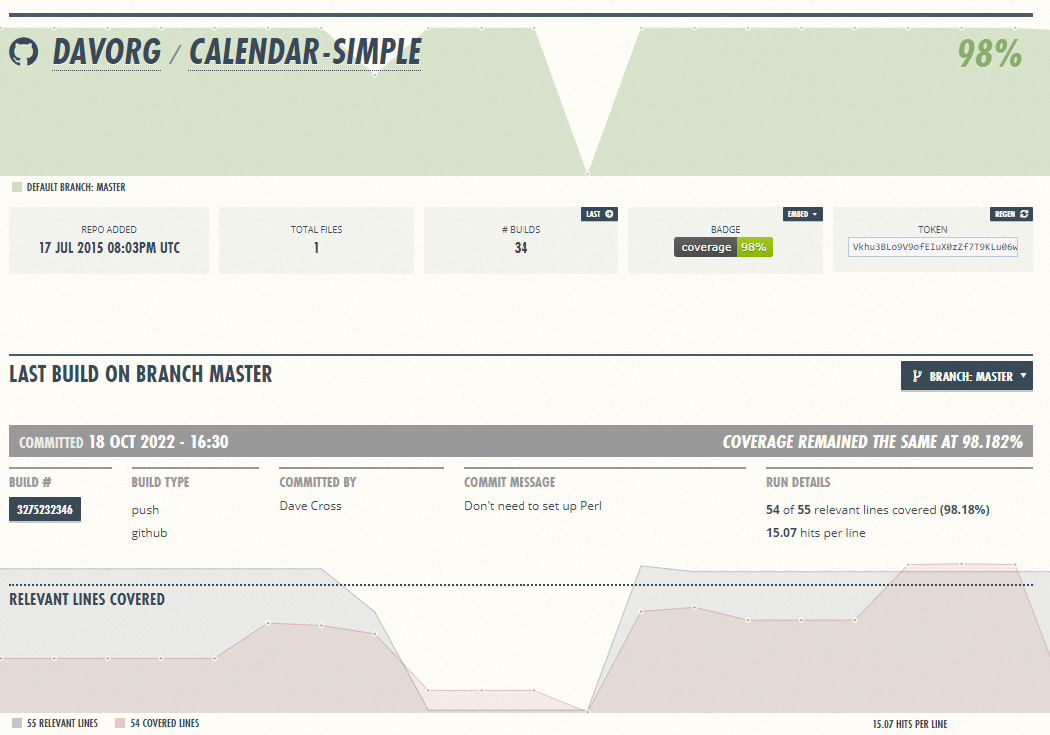I’ve been building Docker containers again. And I think you’ll find this one a little more useful than the Perlanet one I wrote about a couple of weeks ago.
Several years ago I got into Travis CI and set up lots of my GitHub repos so they automatically ran the tests each time I committed to the repo. Later on, I also worked out how to tie those test runs into Coveralls.io so I got pretty graphs of how my test coverage was looking. I gave a talk about what I had done.
But two things changed.
Firstly, Travis CI got too popular and, eventually, removed their free service. And, secondly, GitHub Actions was introduced. Over the last few years, I’ve set up many of my repos to use GitHub Actions for CI. But, basically because I’m lazy, I didn’t remove the Travis CI configuration from those repos.
But last week I decided the time was right to start work on that. And when I went to remove the .travis.yml I realised that something was missing from my GitHub Actions CI workflows – they were running the unit tests, but they weren’t reporting on test coverage. So it was time to fix that.
I needed to reimplement the logic that connected Travis CI to Coveralls.io in a GitHub workflow. That actually turned out to be pretty simple. There’s a CPAN module called Devel::Cover::Report::Coveralls which takes the output from Devel::Cover, converts it to the correct format and sends it to Coveralls.io. And, as a bonus, it has documentation showing how to implement that in a GitHub workflow.
So I hacked at my workflow definition file for one of my CPAN modules and within a few minutes I had it working.
Well, I say “a few minutes”, but it took over thirteen minutes to run. It turns out that Devel::Cover::Report::Coveralls is a pretty heavyweight module and needs to install a lot of other modules in order to do its work.
At this point, you can probably guess where this is going. And you’d be right.
I’ve created a Docker container that has Devel::Cover::Report::Coveralls already installed. And, obviously, it’s available for everyone to use from the Docker hub – davorg/perl-coveralls.
A couple of small adjustments to my GitHub workflow and the coverage job is now running on my new container – and takes 29 seconds instead of 13 minutes. So that’s a win.
The relevant section of my workflow file is here:
|
1 2 3 4 5 6 7 8 9 10 11 12 |
coverage: runs-on: ubuntu-latest container: davorg/perl-coveralls:latest name: Test coverage steps: - uses: actions/checkout@v3 - name: Install modules run: cpanm -n --installdeps . - name: Coverage env: GITHUB_TOKEN: ${{ secrets.GITHUB_TOKEN }} run: cover -test -report Coveralls |
And it’s producing nice graphs on Coveralls.io like the one above.
Let me know if you find it useful.

